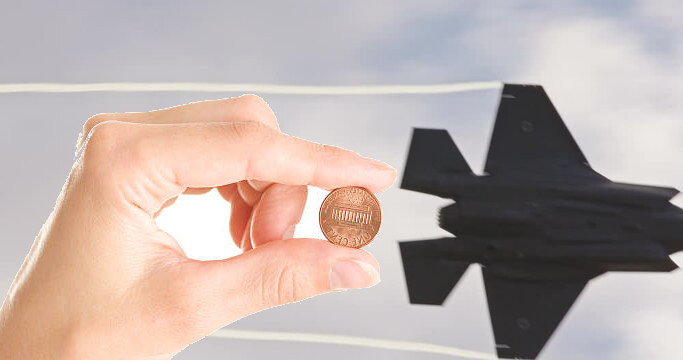Here’s a whimsical-yet-sober dispatch on the economic cost of foreign wars to the American taxpayer—channeling a sort of Victor Davis Hanson tone:
Picture this:
Every taxpayer pinching pennies for coffee and groceries, while unseen streams of dollars flit across continents—arms, aid, training—strings of transactions as surreal as Cupid’s arrows. These funds often bypass the familiar Pentagon base budget, pouring into foreign governments under Foreign Military Financing, Presidential Drawdown Authority (PDA), and related programs.
GAO recently documented \$31.7 billion in PDA-funded drawdowns of defense articles and services to Ukraine just between October 2021 and January 2025—and over \$45.8 billion more was allocated to replenish U.S. inventories (gao.gov). Meanwhile, State Department-administered Foreign Military Financing sends weapons systems and training to allies, a figure GAO ties to efforts in Ecuador, Zambia, and elsewhere—you might say it’s global muscle-flexing via foreign gov’ts .
Contrast that with domestic Pentagon spending: SIPRI pegs total U.S. military expenditure at \$997 billion in 2024, nearly 40% of the world’s defense outlay (pgpf.org). Meanwhile, CBO places more conservative numbers—about \$850 billion discretionary (pgpf.org), and USAFacts records roughly \$820 billion in actual 2023 outlays (usafacts.org).
Whose Wars Are We Paying For?
Let’s wander over the globe and tally the bill for others:
| Country | U.S. Military Aid via PDA/Foreign Military Financing (FY 2022–2024) | Total Military Spending (2024) |
|---|---|---|
| Ukraine | \$31.7 billion (drawdowns) + \$45.8 billion replacements (gao.gov) | — |
| Taiwan, others | Over \$1 billion for drawdowns | — |
| Russia 🇷🇺 | Opposed by U.S. aid; spends \$149 billion on military (7.1% GDP) | |
| China 🇨🇳 | U.S. sells arms to allies near China; draws down ~\$1 billion | \$314 billion defense budget |
| Iran 🇮🇷 | U.S. sanctions; no direct military aid; Iran spends \$7.9 billion (2% GDP) |
A Whimsical Accounting
Imagine your neighbor’s kid Biff building a treehouse with your wood. You bought the wood but never saw the treehouse—he did. That’s PDA: we fork over the toolbox, then pay again to replenish it (\$45.8 billion!) (gao.gov). Meanwhile, our domestic “treehouses”—ships, jets—are funded through the Pentagon’s \$850–\$997 billion base budget (pgpf.org).
When juxtaposed with Russia’s \$149 billion defense industry or China’s \$314 billion military empire (en.wikipedia.org), America’s total outlay dwarfs them all. But the dollar dance isn’t just about who spends more—it’s about where the money actually lands.

By the Numbers: U.S. vs. Global Powers
- United States: ~\$997B total military; ~\$31.7B sent abroad to Ukraine plus replenishment and other drawdowns (pgpf.org).
- China: \$314B domestic, none sent abroad .
- Russia: \$149B domestic (en.wikipedia.org).
- Iran: \$7.9B domestic; not a U.S. ally .
If We Reallocated That Money…
Suppose Congress re-directed the \$45.8 billion annual redraw costs and the \$31.7 billion Ukraine drawdown, added perhaps another \$10 billion to Middle Eastern and European partners, totaling around \$90 billion per year, toward reducing the national debt instead.
- The current U.S. debt stands around \$34 trillion.
- A persistent \$90 billion annual allocation over 20 years, assuming ~2% real interest cost, could reduce debt by approximately \$1.5 trillion, thanks to compound interest effects.
- That in turn could shrink annual interest payments (now around \$900 billion in FY 2024) by \$30–50 billion per year by 2045, freeing funds for infrastructure, education, or tax relief (gao.gov).
Conclusion: A Hanson‑esque Twist
In classic Victor Davis Hanson style: America stands at a crossroads between empire maintenance and debt sanity. We shower our allies with weaponry paid twice—once when shipped, again when restocking. Russia and China crank out tanks inside their borders; we, the Pentagon ashore and overseas. Each year tens of billions drift beyond U.S. soil. Meanwhile, our debt groans under the weight of compounding interest.
If we repatriated those funds—plowing them into the national ledger—our grandchildren might see a household economy healthier, less shackled to debt, better able to fund schools, infrastructure, or tax reprieves. Yet we must also weigh credibility, deterrence, and global responsibilities.
In the whimsical arithmetic of war and peace, choice matters. Do we feed the gears of distant battlefields or invest in our own future?
Works Cited
- GAO: PDA drawdowns \$31.7B & \$45.8B replacements (gao.gov)
- SIPRI / CBO / USAFacts: U.S. military \$997B total, \$850B discretionary, \$820B actual (pgpf.org)
- SIPRI: China \$314B; Russia \$149B (pgpf.org)
- SIPRI / IISS: Iran \$7.9B (en.wikipedia.org)
- Budget interest payments \$900B


